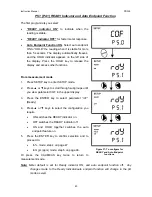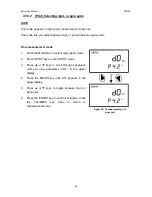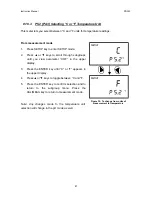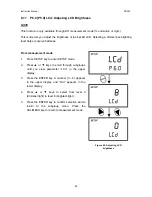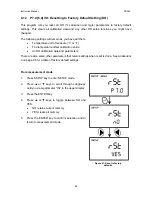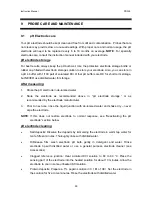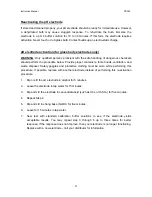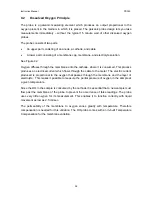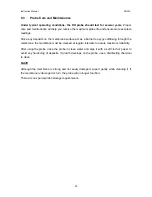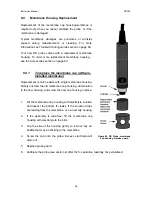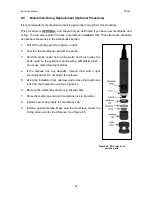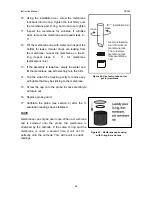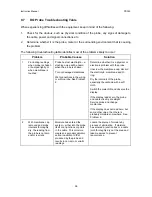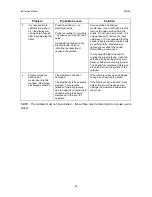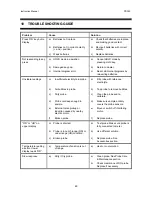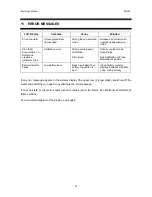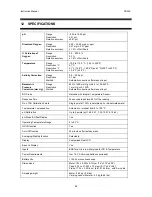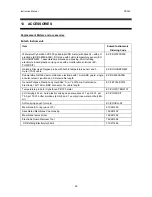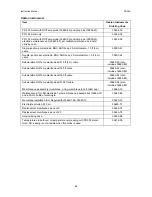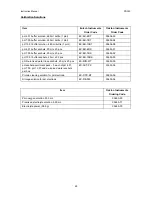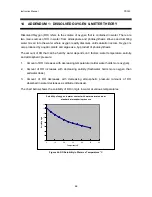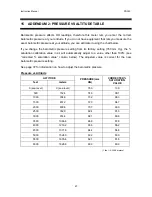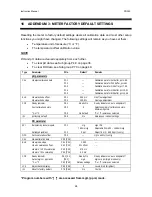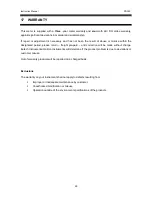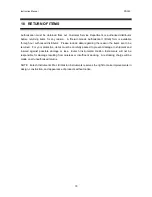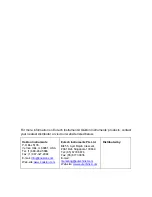
Instruction Manual
PD 300
Problem Probable
Causes
Solution
3.
It is not possible to
calibrate the probe in
air – the display will
not read high enough
after fully adjusting the
offset.
Probe has dried out – no
electrolyte inside.
Probe is overdue for servicing
– excessive build-up of anode
oxide.
A deposit has built-up on the
silver cathode, which is
inhibiting the reduction of
oxygen at its surface.
Service probe and change
membrane. Use a stiff nylon brush to
remove the oxide built-up from the
anode. Do not use a wire brush. It is
only necessary to remove the loose
oxide layer. If it is suspected that the
anode is badly corroded, replace with
a new DO probe. Remember to
tighten the nut under the anode
before fitting a new anode.
If it is suspected that a deposit is
coating the silver cathode, clean the
cathode with 400 grit wet/dry emery
paper or with some scouring powder.
The deposit is sometimes visible as a
brownish stain on the surface of the
cathode.
4.
Display values are
erratic when
membrane is lightly
touched. Membrane
has bulged outwards.
The membrane has been
damaged.
The breather hole has become
plugged. This prevents
release of internal pressure
due to expansion of electrolyte
caused by the probe being
warmed up in the sun, for
example.
If the membrane has been damaged
change it and service the probe.
If the breather hole is blocked, clear
hole with a pin or fine gauge wire.
Change the membrane and service
the probe.
NOTE: The cathode must not be polished – the surface must remain dull (do not use a wire
brush).
59

